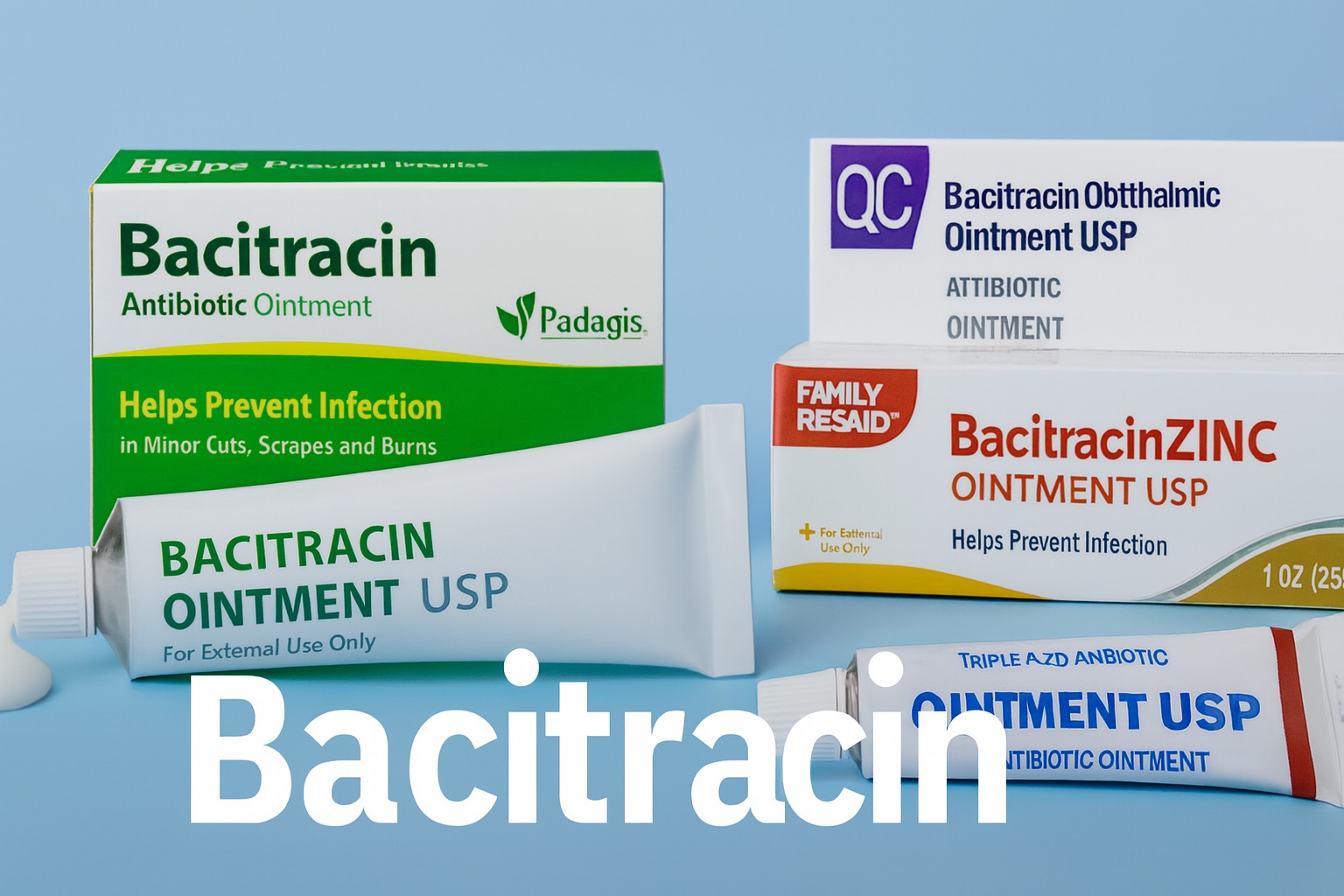Bacitracin is a widely used topical antibiotic that plays a crucial role in preventing and treating minor skin infections. Whether you have a small cut, scrape, or burn, bacitracin is a go-to solution for many households and healthcare professionals alike. This blog post dives deep into what bacitracin is, how it works, its medical uses, benefits, possible side effects, precautions, and frequently asked questions. If you’re curious about this common yet powerful medication, you’re in the right place.
What Is Bacitracin?
Bacitracin is an antibiotic produced by Bacillus subtilis and Bacillus licheniformis. It was first discovered in 1945 and has since become a standard topical treatment for minor skin injuries. It is effective against gram-positive bacteria, including Staphylococcus and Streptococcus species.
This antibiotic is commonly found in over-the-counter ointments and creams, often combined with other antibiotics like neomycin and polymyxin B (as in triple antibiotic ointments). It is also available as a prescription eye ointment to treat bacterial eye infections.
How Bacitracin Works
Bacitracin interferes with the bacterial cell wall synthesis by inhibiting the dephosphorylation of a lipid carrier molecule. This action prevents bacteria from building their protective outer wall, ultimately causing them to die. Because of this targeted mechanism, bacitracin is particularly effective against certain skin bacteria but not effective against fungi or viruses.
Medical Uses of Bacitracin
1. Topical Skin Infections
Bacitracin is primarily used to treat:
- Minor cuts
- Scrapes
- Burns
- Insect bites
- Surgical wounds
2. Eye Infections
Bacitracin ophthalmic ointment is used to treat bacterial conjunctivitis and other eye infections. It must be prescribed by a healthcare provider.
3. Post-Surgical Wound Care
In hospitals, bacitracin may be used for wound care following surgical procedures to prevent bacterial infections.
4. Combination Therapies
Bacitracin is often part of triple antibiotic creams (with neomycin and polymyxin B) for broader antibacterial coverage.
Benefits of Bacitracin
- Broad-Spectrum Activity: Especially effective against gram-positive bacteria.
- Over-the-Counter Availability: Easily accessible for minor injuries.
- Minimal Systemic Absorption: When used on the skin, very little enters the bloodstream.
- Eye Safety: Can be safely used for bacterial eye infections under medical supervision.
- Safe for Most Age Groups: Generally safe for children and adults.
How to Use Bacitracin Safely
- Clean the Affected Area: Gently clean the wound with water and mild soap.
- Apply a Thin Layer: Use a small amount of bacitracin to cover the affected area.
- Cover with a Bandage (if needed): To keep the area clean and protected.
- Repeat 1-3 Times Daily: As directed on the label or by your healthcare provider.
- Avoid Overuse: Prolonged use may increase the risk of side effects.
Possible Side Effects
Although bacitracin is generally safe, it can cause side effects in some people:
- Skin Irritation: Redness, itching, or rash
- Allergic Reactions: Hives, swelling, difficulty breathing (rare)
- Contact Dermatitis: Especially with prolonged use
- Eye Irritation: If using the ophthalmic form improperly
Stop using the product and consult a doctor if any of these effects occur.
Warnings and Precautions
- Not for Deep Wounds or Serious Burns: Only use on minor surface wounds.
- Avoid in Case of Allergy: Do not use if you have a known allergy to bacitracin.
- Consult Your Doctor: Before using it for eye infections or in children under 2 years.
- Pregnancy and Breastfeeding: Generally considered safe, but always consult a healthcare provider first.
- Avoid Ingestion: Bacitracin is meant for external use only (except in prescribed eye ointment form).
Storage and Shelf Life
- Store at Room Temperature: Away from heat and moisture.
- Check Expiry Date: Do not use expired ointments.
- Keep Out of Reach of Children: Prevent accidental ingestion or misuse.
Bacitracin vs. Neosporin
Neosporin is a brand that combines bacitracin, neomycin, and polymyxin B. While bacitracin alone targets mainly gram-positive bacteria, Neosporin offers broader coverage. However, Neosporin can cause allergic reactions in some users due to neomycin. Bacitracin-only products may be a safer alternative for people with sensitive skin.
Frequently Asked Questions (FAQs)
Q: Can I use bacitracin on a tattoo? A: It’s best to consult your tattoo artist or dermatologist. While some use it during the initial healing phase, others avoid it due to potential allergic reactions.
Q: Is bacitracin good for acne? A: No. Bacitracin is not effective for treating acne, which involves different types of bacteria and inflammation.
Q: How long can I use bacitracin? A: Use for no more than 7 days unless directed by a doctor.
Q: Can I use bacitracin inside my nose? A: Only if prescribed by a doctor. Using it inside the nose without guidance can lead to complications.
Q: Is it safe for pets? A: Consult your veterinarian before using bacitracin on pets.
Final Thoughts
Bacitracin remains one of the most trusted topical antibiotics for managing minor skin injuries. Its effectiveness, affordability, and ease of use make it a staple in many first-aid kits. However, like all medications, it must be used responsibly. Always follow instructions, be aware of possible side effects, and consult a healthcare provider when in doubt.
By understanding bacitracin’s full profile—from uses to precautions—you can make informed decisions that promote quicker healing and better skin care. Stay safe, and keep your first-aid essentials up to date.


Leave a Comment